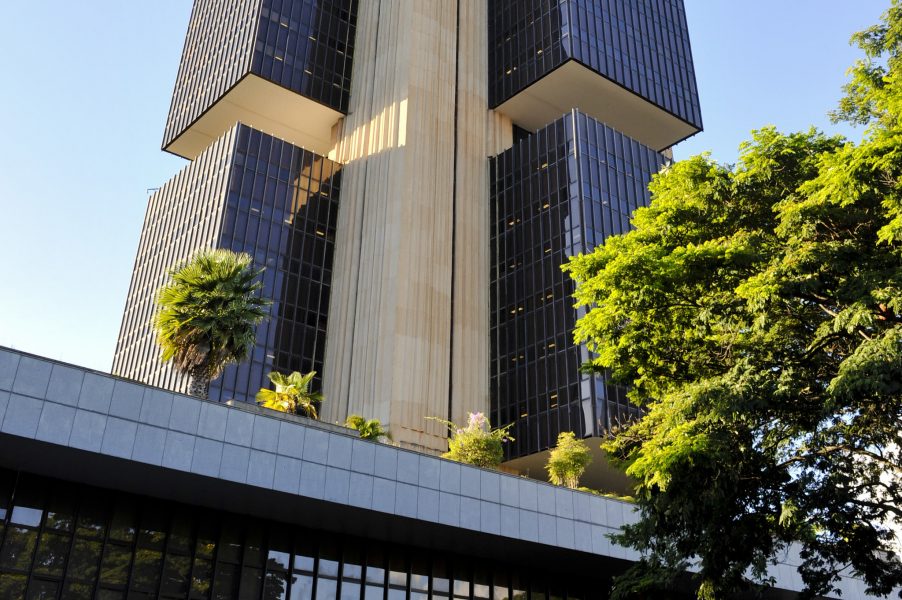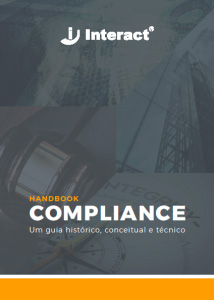
This is the third publication in the Compliance series in history. In the first text, we know the main events that contributed to the germination of the theme, between 1900 and 1950. In the second, from the 1960s to 1990, we saw the birth of the area, the scandals in the United States and the siege of the financial system.
Today we are going to present how Compliance permeated the fight against money laundering, between 1990 and 2000. This content is part of Interact’s Compliance Handbook, a 130-page material that contemplates the history, the conceptual foundations, the Brazilian legislation, the main models in the world and how SA Strategic Adviser
meets these recommendations. The survey conducted by Interact was based on the creation of the Compliance & Risk Management
technology solution.
Without further ado, we wish you a fruitful reading.
Combating Money Laundering – 1990-2000
More than a reality, Compliance has become a necessity in this phase. Initially focused on the financial sector, it gradually began to cross different areas due to legal requirements, trade requirements and long-term competitiveness benefits.
In contrast, money laundering began to take on different facets, which required countries to change their legal systems. The Foreign Corrupt Practices Act (FCPA) is considered to be the driving force in this period for the adoption of stricter anti-corruption policies by United Nations member countries.
According to Leopoldo Pagotto (2013, p. 27), the prohibition of international bribery with the FCPA was a loss initially for North American companies, since the undue payment to foreign civil servants was “a relatively common practice”. A 1996 United States Department of Commerce report estimated a $ 11 billion loss in business in previous years with the legislation.
For this reason, it was essential for them that other industrialized countries also joined the fight against bribery and, ultimately, Compliance. Because it contains the largest number of industrialized nations, Europe was just obliged to enter this ambience of adjustments.
Combat mechanisms
In 1990, the International Financial Action Task Force on Money Laundering – FATF (FATF) published 40 recommendations to be followed by countries in the fight against money laundering, of universal application. They have no force of law, since the entity recognizes the sovereignty of nations. In the same year, the CFATF – Caribbean Financial Action Task Force was created to combat money laundering in tax havens in the Caribbean (ABBI, 2009).
The Council of Europe, an intergovernmental organization, started to demand that the signatories criminalize money laundering and establish legal embargo and confiscation measures. Applicability covered countries other than Europe. The decisions came into force in 1993.

Foto: Council of Europe.
In 1995, Financial Intelligence Units around the world created the Egmont Group of Financial Intelligence Units in Brussels, Belgium. At the same time, the entity launched a forum to support programs to combat money laundering. It currently includes a body of 159 financial intelligence units that combat money laundering and terrorist financing.
In 1997, the OECD held the Convention on Combating the Corruption of Foreign Public Officials in International Business Transactions, in Paris, France. The signatory countries committed themselves to adopt anti-corruption measures, which represented the adoption of self-compliance measures by companies. The aim was to create a culture of compliance with legal and regulatory guidelines (SARCEDO, 2014). Brazil enacted the convention with Decree No. 3,678, in 2000.
Compliance in the banking system
In 1997, the Basel Committee launched the document Core Principles for Effective Banking Supervision, with universal principles for strengthening the financial system, with emphasis on principle 14 in the 1997 version and principle 17 in the 2006 review. This was the first since Compliance was explicitly mentioned by the body.
Principle No. 14: “Banking supervisors must ensure that banks have adequate internal controls for the nature and scale of their business. These should include clear arrangements for delegating authority and responsibility: segregating functions that involve the bank’s commitment, distributing its resources and accounting for its assets and obligations; reconciliation of these processes; safeguarding your assets; and appropriate and independent Internal and External Audit and Compliance functions to test adherence to these controls, as well as applicable laws and regulations”(THE BASEL COMMITTEE, 1997, p. 30, emphasis added).

In the background, the headquarters of the Basel Committee, Switzerland. Photo: Metro Centric
In March 1998, Law No. 9,613 was published, which deals with crimes of laundering or concealment of assets, rights and values and the use of the financial system for such acts. Among the provisions, it created the Financial Activities Control Council (Coaf), formerly located within the Ministry of Finance and today allocated to the Ministry of Justice. The purpose of the body is to discipline, apply administrative penalties, receive, examine and identify suspicious occurrences of illegal activities.
The Basel Committee published the Framework for Internal Control Systems in Banking Organizations – 13 principles for the Assessment of

Internal Control Systems. The document focused on the need for effective internal controls and the promotion of the stability of the global financial system. The word compliance is mentioned 21 times in the publication (THE BASEL COMMITTEE, 1998).
Brazil adopted the guidelines of that document in the same year. The National Monetary Council published Resolution 2,554, of September 24, 1998, which provides for the implantation and implementation of the Internal Controls system. Regarding ethics, integrity and internal controls, the document mentions the following:
“Art. 4º It is incumbent upon the institution’s board of directors, in addition to the responsibilities listed in art. 1, paragraph 2, the promotion of high ethical and integrity standards and an organizational culture that demonstrates and emphasizes, to all employees, the importance of internal controls and the role of each one in the process ”(BANCO CENTRAL DO BRASIL, 1998 , p.5).
Author:
Vinícius Flôres
Journalist, Ph.D. in Communication, and martech enthusiast. Communication and Marketing Supervisor at Interact Solutions.
References
ABBI. ASSOCIAÇÃO BRASILEIRA DOS BANCOS INTERNACIONAIS – Cartilha Função de Compliance, 2009. Disponível em: www.abbi.com.br. Acesso em: 1 fev. 2019.
BANCO CENTRAL DO BRASIL. Resolução 2.554. Brasil, 1998. Disponível em:
https://www.bcb.gov.br/pre/normativos/res/1998/pdf/res_2554_v3_P.pdf Acesso em: fev. 2019.
PAGOTTO, Leopoldo. Esforços Globais Anticorrupção e seus reflexos no Brasil. In: DEBBIO, Alessandra Del; MAEDA, Bruno Carneiro; AYRES, Carlos Henrique da Silva (Coord.) Temas de Anticorrupção e Compliance. Rio de Janeiro: Elsevier, 2013.
SARCEDO, Leandro. Compliance e Responsabilidade Penal da Pessoa Jurídica: Construção de um novo modelo de imputação, baseado na culpabilidade corporativa. Tese de Doutorado. Faculdade de Direito da Universidade de São Paulo, 2014.
THE BASEL COMMITTEE. Core Principles for Effective Banking Supervision. Basileia, 1997. Disponível em: https://www.bis.org/publ/bcbsc102.pdf Acesso em: fev. 2019.
____________________. Framework for Internal Control Systems in Banking Organisations. Basel, 1998. Disponível em: https://www.bis.org/publ/bcbs40.pdf. Acesso em: fev. 2019.





